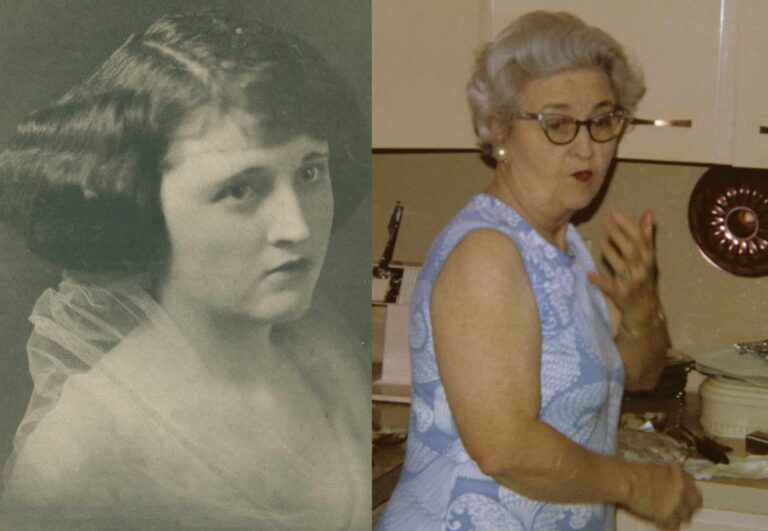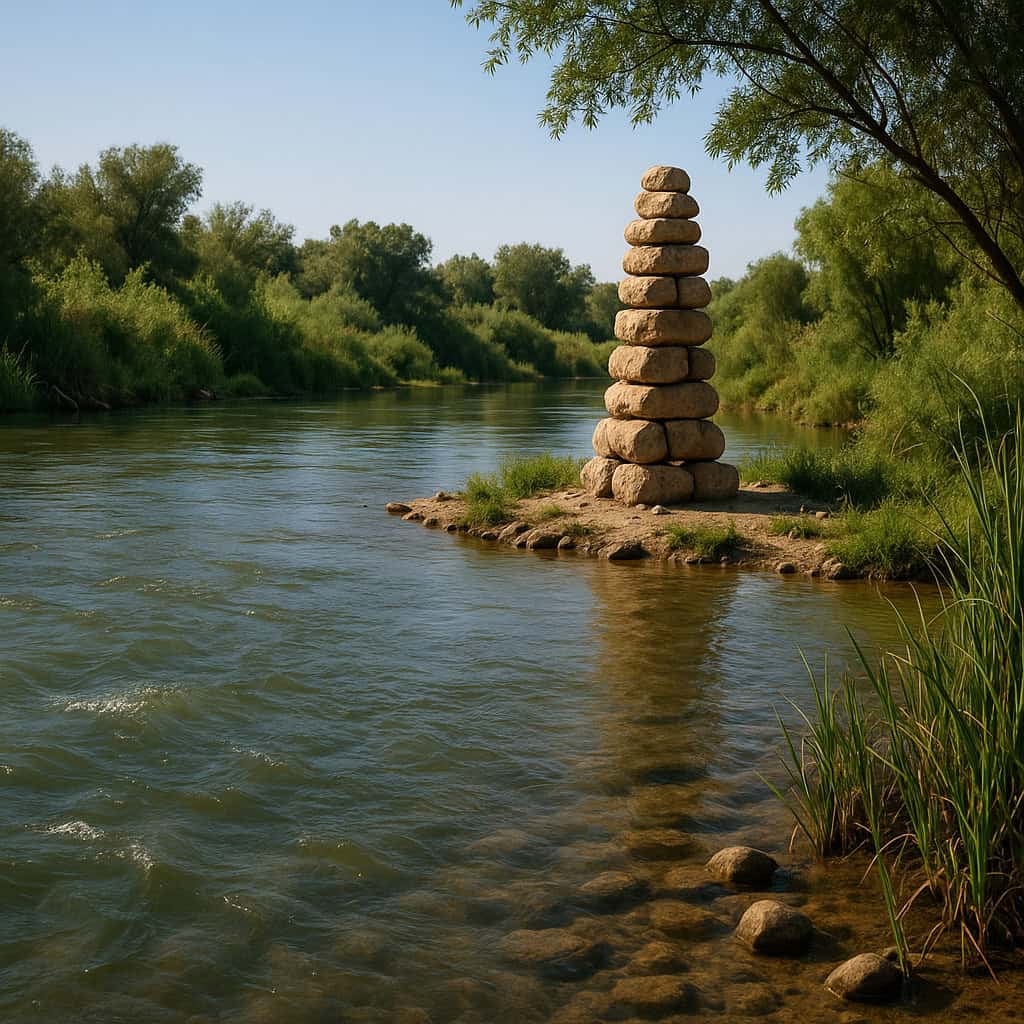How do YOU want to be remembered or known by future generations? And WHAT do you want them to remember about you?
This hit me when I saw the early picture of my grandmother taken before she was married. It had been in my mother’s big dresser drawer where she pitched all photos – yes, willy-nilly style. And these came from her parents but weren’t seen by me until my mother was in her later years.
Of course, I would not have recognized her, because in my memory of my grandmother, she looked like the picture on the right. And yes, she was almost always in her kitchen, cooking and baking the most wonderful things – you can tell she just did a “taste test” of her latest creation in this picture.
What a transition as I compare the two photos – it makes me wonder what she was like as a young girl? As a young mother? As a friend and a neighbor? As a Sunday School teacher?
I was told I named her “Tokies” because I couldn’t say Stokes, her last name. Grandma came out “mama” and “Stokes” came out “Tokies” – so Mama Tokies it was! And I only knew her as my grandmother in her 60’s and older. I realize that is also true of my teenage grandkids today – they only know me as a gray-haired older woman.
I suspect Mama Tokies was an excellent homemaker in that she was an outstanding cook in all the years I remember her. And her focus of the day was a trip to the grocery store to get fresh foods, have a meal ready when my grandfather came home for lunch, bake something in the afternoon and then have a delicious dinner ready when my grandfather returned home at the end of the day. She planned events, meals, decorated for the holidays – I absolutely loved being at her home because she taught me how to crochet, knit and do needlepoint.
Plus she sewed beautiful clothes for my mom as well as me and my sister. I would never have had a “poodle” skirt that flared out with several petticoats under it if it had not been for her sewing skills. (don’t know what a poodle skirt is? You youngster you – look it up) On top of that, she gave me my own Singer sewing machine in junior high. She had taught me how to sew on hers which was a Singer treadle machine. (yep, you used your foot to pump the treadle underneath the machine which turned the wheel on the machine body thrusting the needle up and down to sew the material together – stop pumping the treadle and the machine stopped)
It really didn’t surprise me when I inherited boxes of things from my mother and from her brother that included a textbook inscribed “Aileen McDonald” Feb. 6, 1919. That was her maiden name and she also noted it was S.H.S. (Slaton High School). The title? Foods and Household Management: A textbook of the Household Arts. You would not find this in the current high school textbooks of our teens.
I loved the chapter on Kitchen Furnishings and the one on Fuels and Stoves. “The fuels most widely used in this country are coal, gas and kerosene….(and) wood…where wood is abundant, but in a sense it (wood) is the fuel of the past. Electricity…is not in common household use….” I chuckle as I think about my gas stove still needing electricity to work, as does every other appliance in my kitchen.
It did remind me of my grandmother explaining to me why they called the refrigerator an “ice box” – they truly had ice delivered in blocks that went into their box where foodstuffs could be kept cool. The textbook covered this, too – “The ice box is in the outer wall and is filled from the outside”.
What a hoot it was looking through that textbook – chock full of recipes for everything you can imagine. And a chapter on meals included how to prepare a meal on time – plus the duties of the waitress. I have blown both of those, for sure.
But this did help me get a sense of how my grandparents lived as a young family – the details and focus – it gave me a sense of context. And I understood her later food preparation and serving it so punctually and beautifully that I witnessed as her granddaughter.
Oh the times in which they lived – can I even get a sense of them?
And it called to mind a story my grandmother told me about the depression and how poor everyone was. She told me hobos from the train that passed through (about a mile away from their home in town) would come to the back door and ask for any clothing or scraps of food. She remembered one man who knocked on her door and asked if she had a coat – it was a freezing cold day. She had already given away all her husband’s other coats and had to turn him away. She got to thinking about it and felt so bad for him she took her husband’s last coat and drove down to the train area to find him and give him the coat.
What they lived through!
And who knows their stories? My siblings and I only knew a few of them. There are no diaries, journals or written stories. Mother did save one letter my grandfather wrote to my grandmother before they were married and he was in boot camp in New York waiting to be shipped overseas for WWI. Now that is a treasure!
It really hits me as I am looking at my Life-Story photobook and thinking which stories I share – what would be important or just descriptive – what would be instructive? What daily slices of life would I love to have from my great-grandparents! How can I translate that to choosing what I will preserve?
How about you? Are you the container of stories told by your parents, grandparents, family members? How will you preserve them? And which photos are key – are they identified?? Are the stories written alongside them?
And what about your stories? Your transformative, life-shaping events and lessons learned?
OK – enough feeling guilty (or maybe you are congratulating yourself on having preserved these). All I ask is that you make a plan – how will you capture and preserve those precious memories? And then get to working the plan.
Need help? Feel free to jump on a quick call with me to make a plan – find a time that works for you when you click HERE



